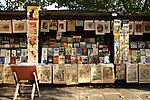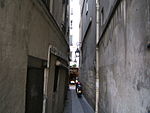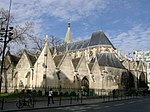Shakespeare and Company (bookstore)

Shakespeare and Company is an iconic English-language bookstore opened in 1951 by George Whitman, located on Paris's Left Bank. The store was named after Sylvia Beach's bookstore of the same name founded in 1919 on the Left Bank, which closed in 1941. Whitman adopted the "Shakespeare and Company" name for his store in 1964. The bookstore is situated at 37 rue de la Bûcherie, in the 5th arrondissement. Opened in 1951 by American George Whitman, it was originally called "Le Mistral", but was renamed to "Shakespeare and Company" in 1964 in tribute to Sylvia Beach's store and on the 400th anniversary of William Shakespeare's birth. Today, it continues to serve as a purveyor of new and second-hand books, as an antiquarian bookseller, and as a free reading library open to the public.Additionally, the shop houses aspiring writers and artists in exchange for helping out around the bookstore. Since the shop opened in 1951, more than 30,000 people have slept in the beds found tucked between bookshelves. The shop's motto, "Be Not Inhospitable to Strangers Lest They Be Angels in Disguise", is written above the entrance to the reading library.
Excerpt from the Wikipedia article Shakespeare and Company (bookstore) (License: CC BY-SA 3.0, Authors, Images).Shakespeare and Company (bookstore)
Rue Saint-Julien Le Pauvre, Paris 5th Arrondissement (Paris)
Geographical coordinates (GPS) Address Nearby Places Show on map
Geographical coordinates (GPS)
| Latitude | Longitude |
|---|---|
| N 48.8525 ° | E 2.3469444444444 ° |
Address
Ribouldingue
Rue Saint-Julien Le Pauvre
75005 Paris, 5th Arrondissement (Paris)
Ile-de-France, France
Open on Google Maps










